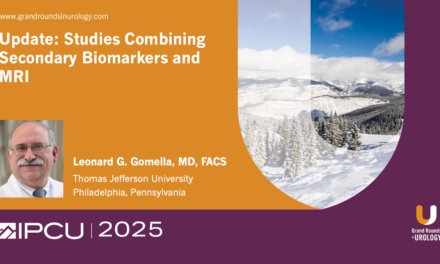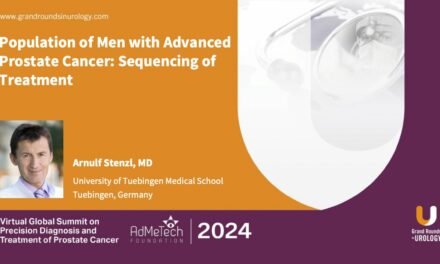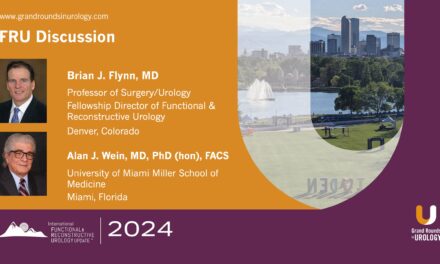Erich Huang, PhD, presented “Criteria for the Development and Validation of Radiomic Tests in Diagnosis and Treatment of Prostate Cancer” during the 8th Global Summit on Precision Diagnosis and Treatment of Prostate Cancer on October 8, 2024.
How to cite: Huang, Erich. “Criteria for the Development and Validation of Radiomic Tests in Diagnosis and Treatment of Prostate Cancer.” October 8, 2024. Accessed Nov 2025. https://grandroundsinurology.com/criteria-for-the-development-and-validation-of-radiomic-tests-in-diagnosis-and-treatment-of-prostate-cancer/
Criteria for the Development and Validation of Radiomic Tests in Diagnosis and Treatment of Prostate Cancer – Summary
Erich Huang, PhD, examines the rapid growth and evolving role of radiomics in oncology, particularly in prostate cancer.
In his 6-minute presentation, he highlights the exponential increase in radiomics-related publications. He explores the promise of radiomic tests, while emphasizing that most findings remain preliminary and require further validation to demonstrate true clinical utility. Dr. Huang discusses challenges in standardizing radiomic protocols, ensuring reproducibility, and addressing test drift caused by advancements in imaging technology.
Key components include defining the target population, demonstrating reproducibility, and establishing the clinical validity of radiomic features. Dr. Huang underscores the importance of “test lockdown,” which ensures computational models are fixed and outputs are unambiguously interpretable. He provides examples of study designs to evaluate the efficacy of radiomic tests, comparing their results with standard care decisions.
The Global Summit on Precision Diagnosis and Treatment of Prostate Cancer is a unique multi-disciplinary forum organized to inform the key health care stakeholders about the emerging advances in clinical case and research and create a consensus-based vision for the future of precision care and educational and research strategy for its realization. The mission of the Summit is to fill the currently existing gap between the key experts of in vivo imaging, the world authorities in the in vitro fluid- and tissue-based molecular diagnostics, including genomics, and thought leaders in the development of novel observation strategies (e.g., active surveillance, or AS) and therapeutic interventions.





